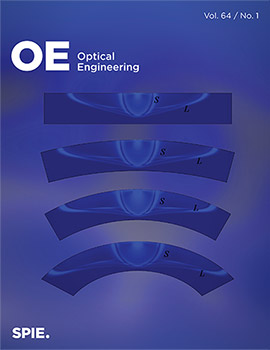Xiaoyan Wang, Zihan Huang, Rendong Ji, Tao Wang, Huichang Chen, Ying He, Shifeng Li, Zhengwei Wang
Optical Engineering, Vol. 64, Issue 01, 014103, (January 2025) https://doi.org/10.1117/1.OE.64.1.014103
TOPICS: Fluorescence, Emission wavelengths, Spectroscopy, Fluorescence spectroscopy, Optical engineering, Raman scattering, Quantitative analysis, 3D modeling, Rayleigh scattering, Magnesium
Fulvic acid is a major component of humus and has a complex composition structure and characterization properties. Proposing an effective detection method for fulvic acid has certain research significance. We detect the three-dimensional (3D) fluorescence spectrum of fulvic acid and apply the parallel factor (PARAFAC) method for qualitative and quantitative analysis. Nine different concentrations of fulvic acid solutions were prepared, and each sample was scanned four times using a fluorescence spectrophotometer, resulting in 36 sets of 3D fluorescence spectra. It is found that the fluorescence characteristic peak is at 428 nm, and the standard excitation wavelength is 360 and 250 nm. The PARAFAC algorithm is applied to decompose the spectrum, resulting in three component factors corresponding to UVA humic-like, t soil fulvic acid, and UVA marine humic-like. By establishing an exponential fitting relationship between the PARAFAC scores of each component and the concentration of fulvic acid, the optimal content prediction model is obtained, with a coefficient of determination of 0.99888 and an average recovery rate of 99.10% for six test samples. Studies show that fluorescence spectroscopy combined with PARAFAC can realize the effective analysis of fulvic acid concentration and composition factor, which can also be applied to the analysis of more complex dissolved organic matter in actual environmental water.



 Receive Email Alerts
Receive Email Alerts